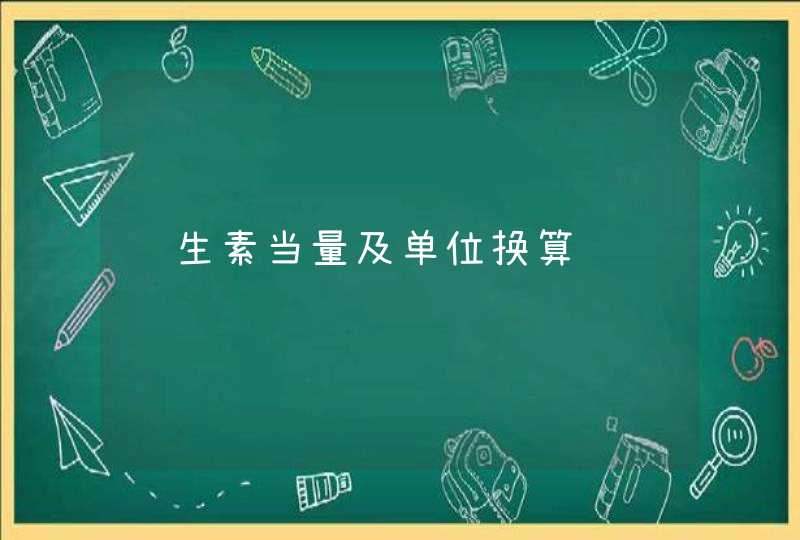
Vitamin A Technical Details:
Vitamin A is a fat-soluble vitamin. It is important for vision, bone growth and cell division.
Vitamin A consists of Retinol from animal sources, and Provitamin A Carotenoids from plant sources.
Retinol is referred to as pre-formed vitamin A. This means that it can be used directly by the body.
Provitamin A Carotenoids are Vitamin A precursors . This means that they are converted to Vitamin A by the body. However, conversion of the carotenoids is less efficient than that of retinol.
The Provitamin A Carotenoids are beta-carotene, alpha-carotene, beta-cryptoxanthin, lycopein, lutein and zeaxanthin (lutein and zeaxanthin are combined in the current database). The carotenoids are responsible for the red and yellow pigments of plants.
A unit called Retinol Activity Equivalents (RAE) is used to compare the Vitamin A activity of the different forms of Vitamin A. 1 µg (microgram) of retinol is equivalent to 1 µg RAE. However it takes 12 µg beta-carotene to equal 1 µg RAE, and 24 µg of the other carotenoids to equal 1 µg RAE. The following table summarizes the conversion of vitamin A values to RAE:
Historical Measures of Vitamin A
Previously, a unit called International Units (IU) was used to describe Vitamin A activity. However, at the time International Units for Vitamin A were defined (1989), it was thought that beta-carotene was half as concentrated as retinol (beta-carotene is now considered to be only 1/12 as concentrated as retinol).
Because of this, Vitamin A measurements expressed as IU tend to over-state the contribution of the provitamin A carotenoids. The following table summarizes the conversion of Vitamin A values to IU:
When it was determined that IU tended to overstate the contribution of the provitamin A carotenoids, a new unit called Retinol Equivalents (RE) was defined to describe the new values. At the time beta-carotene was thought to be 1/6 as concentrated as retinol. The following table describes the conversion of vitamin A values to RE:
In 2001, the National Academy of Sciences Institute of Medicine (NAS IOM) determined that Vitamin A activity from carotenoids is only half of what was previously believed. To account for this difference, and to avoid confusion, the new unit Retinol Activity Equivalents (RAE) was defined. Retinol Equivalents (RE) are no longer used.
The following table summarizes the relationship between the different measures:
IU Details
At the time of this writing (2004), the RDI (Reference Daily Intake) of Vitamin A is 5000 IU. However, IU is an inaccurate measure of vitamin A activity because it overstates the contributions of the provitamin A carotenoids (by a factor of 6). The FDA (US Food and Drug Administration) is considering changing the RDI to express it in terms of RAE.
Because the conversion of IU to RAE is different for retinol and the carotenoids, you cannot convert IU to RAE (or RAE to IU) for Total Vitamin A unless you know the proportion of retinol to carotenoids in the sample.
For example, knowing that you have 40 IU of Total Vitamin A is not enough information to determine how much retinol and carotenoids you have. 40 IU of Total Vitamin A can come from 12 µg RAE of retinol, or from 2 µg RAE of carotenoids, or from 6 µg RAE retinol plus 1 µg RAE carotenoids, or from many other combinations of retinol and carotenoids. The following table summarizes:
nutraCoster Details
Entering Retinol or Carotenoids Values
When you enter RAE for retinol or any of the carotenoids, nutraCoster automatically calculates the IU and %RDI values for the nutrient.
Finally, nutraCoster willrecalculate the IU and %RDI values of Total Vitamin A based on the new values for retinol and carotenoids.
Example: Suppose you have 80 µg RAE Total Vitamin A, which is composed of 60 µg RAE retinol and 20 µg RAE total carotenoids. The following table lists the values for the example:
Now change the Total Vitamin A RAE to 120 µg RAE. nutraCoster performs the following steps:
Total Vitamin A RAE was the sum of the retinol and carotenoids values, so nutraCoster increases retinol and carotenoids proportionally to 90µg RAE and 30 µg RAE.
The new value of 90 µg RAE for retinol converts to 300 IU and 6 %RDI.
The new value of 30 µg RAE for carotenoids converts to 600 IU and 12 %RDI.
Using the new IU and %RDI values, Total Vitamin A is now 900 IU and 18 %RDI.
The following table shows the results after the change:
nutraCoster performs a similar series of steps when you enter IU or %RDI values for Total Vitamin A.
CarotenoidDetails
When you enter or change a value for Total Carotenoids, nutraCoster checks to see if the Total Carotenoids value was equal to the sum of the individual Provitamin A Carotenoids before the change. If it was, nutraCoster recalculates the individual carotenoid values so the sum of the values equals the new Total Carotenoids value, while keeping the proportions the same.
When you enter or change a value for any of the individual carotenoids, nutraCoster checks to see if the Total Carotenoids value was equal to the sum of the individual Provitamin A Carotenoids before the change. If so, nutraCoster adjusts the Total Carotenoids value to equal the sum of the individual carotenoid values after the change.
为了统一计量膳食中的维生素A,而提出的一个概念。其含义是包括视黄醇和β-胡萝卜素在内的具有维生素A活性物质所相当的视黄醇量。
由于人体 维生素A 来源于动物性食物的维生素A和植物性食物中的 胡萝卜素 ( 维生素A原 ),而维生素A的常用计量单位为国际单位(IU),胡萝卜素的常用计量单位为μg(微克)或者mg(毫克),为了统一计量膳食中的维生素A, FAO /WHO(1967)提出了视黄醇当量(Retinol Equivalent, RE)概念。其含义是包括视黄醇和 β-胡萝卜素 在内的具有维生素A活性物质所相当的视黄醇量。
视黄醇当量、 维生素A 、 β-胡萝卜素 的换算关系如下:
1μg β-胡萝卜素=0.167μg视黄醇当量(理论上1分子β-胡萝卜素能形成2分子维生素A,但因为 胡萝卜素 的吸收率为1/3,而吸收后转化为维生素A的 转化率 又只有1/2,所以,1μg的胡萝卜素只能折算为0.556IU维生素A,即0.167μg视黄醇当量。1IU维生素A=0.3μg视黄醇当量)
一、蛋白
每个人1公斤休重提供1-1.5克,占总发热量的12%~14%。关键由猪瘦肉、蛋、乳、黄豆与豆类食品提供。动物蛋白的应占三分之一。建议一个人每日摄取猪瘦肉75-100克,即一副扑克牌尺寸的一块。
二、人体脂肪
每个人1公斤休重提供1~1.2克,占总发热量的25%~30%。关键由食用油提供。
三、维他命
维生素D为2260标准单位,维生素b21、B2、B6、C,各自为1.5~1.8,1.2~2.1,2.70~75mg。50岁下列的成人每天需要摄取200IU的维他命D,50岁以上的人则需要400-600IU的维他命D。
四、碳酸盐:
钙每日的总摄取量为:18岁到50岁中间每日最少800到1000mg。50岁以上,每日最少1000到1200mg。
五、维他命和碳酸盐
维他命和碳酸盐关键由海鲜产品、新鲜的蔬菜水果、非常是深绿叶蔬菜及水果提供,每人提供400~500克。
一日三餐
早饭是一天最重要的一顿,由于小孩子早上课程内容繁杂。因此营养成分占24小时的35%:关键由肉类食品、奶、蛋和中式点心、水果蔬菜构成。早晨最好是空腹先喝20ml纯蜂蜜温水,20-30分钟以内吃早饭不错。
午饭也很重要,约占24小时营养成分的40%上下。夏季最好是采用清热解毒开胃的食物。要维持食材的新鲜,不必一次做许多
。也不必一次选购许多
新鲜原材料,由于夏季食材易霉变。在午饭中添加适量的乳制品有益于钙的消化吸收,增加抵抗力。
晚饭最美味七分饱,尽可能不要吃新鲜水果:早晨吃苹果是金,下午吃是银,晚上吃是零!夜里还要让消化道休息一下,忌吃大多数太饱和状态不容易消化吸收的食材。
以上内容参考 人民网-中国居民膳食营养素参考摄入量修订
欢迎分享,转载请注明来源:优选云

 微信扫一扫
微信扫一扫
 支付宝扫一扫
支付宝扫一扫
